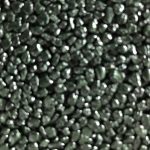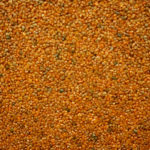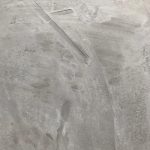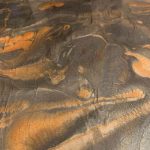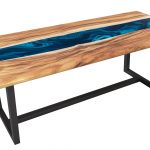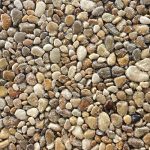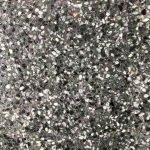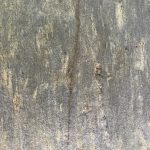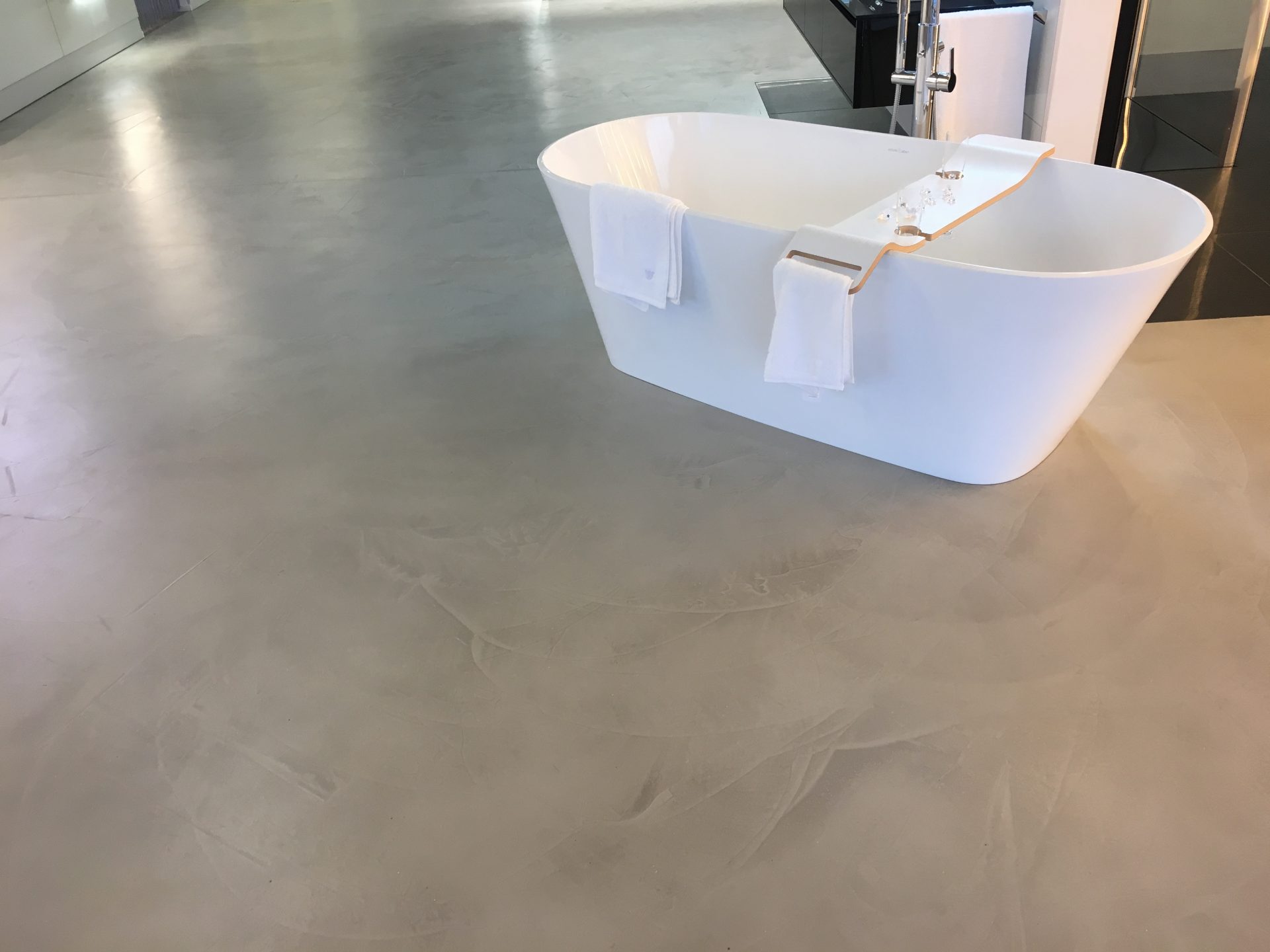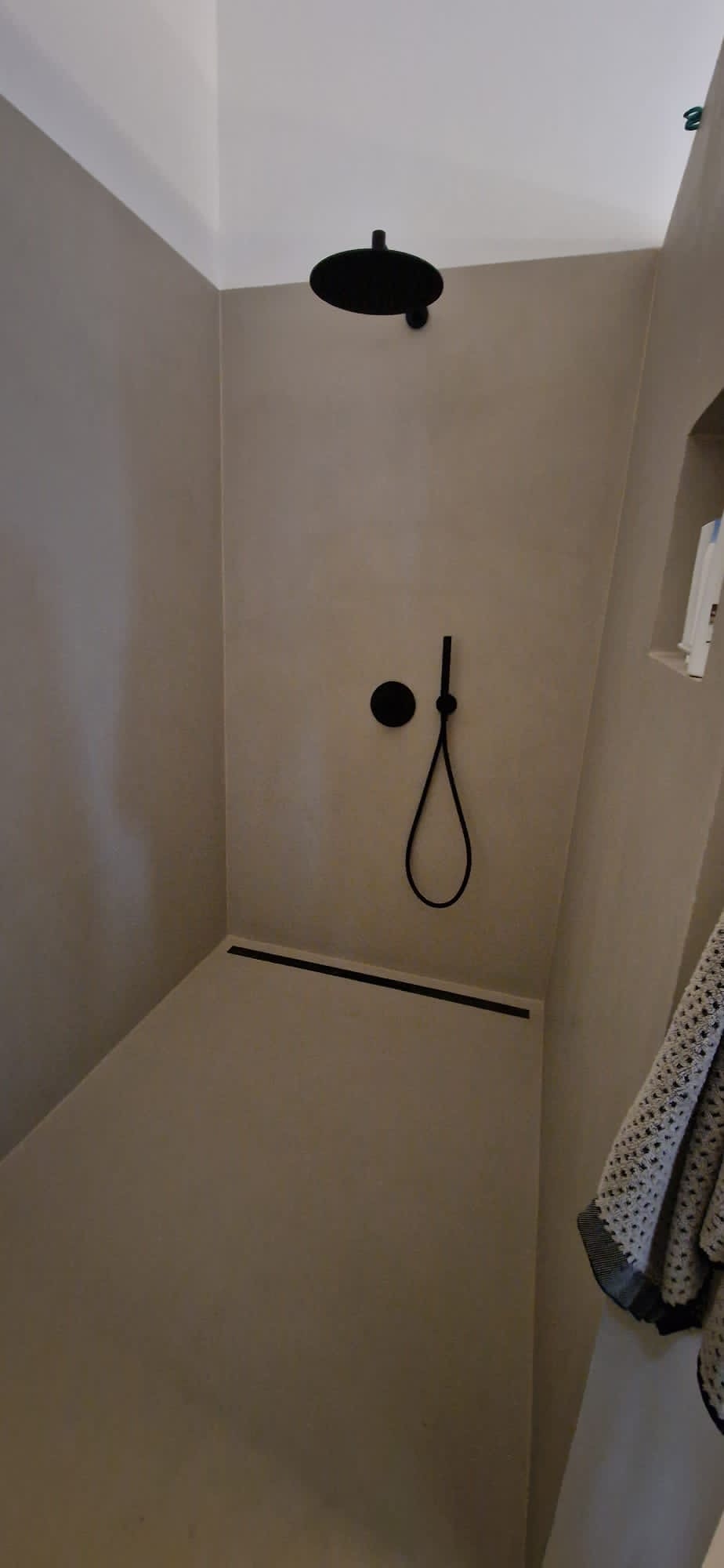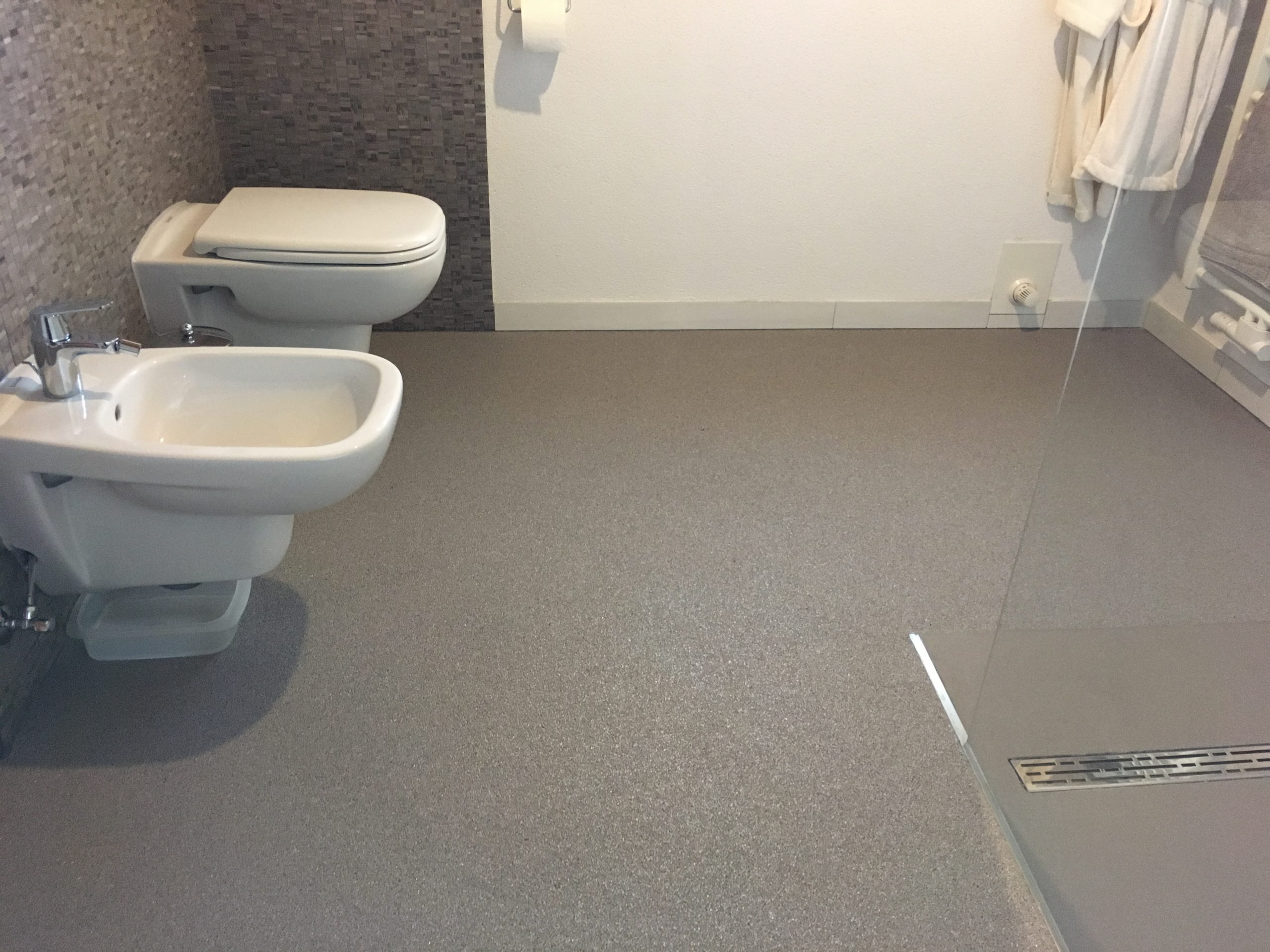Is stone carpet suitable for underfloor heating? The two are definitely a good duo. Underfloor heating is an efficient and comfortable way to heat a room. With this type of heating, the heating elements are located under the floor covering and heat the room from below. There are many reasons why more and more building owners are opting for one system in newly built properties and also when renovating existing properties.
If you too would like to install underfloor heating in your home or office, you should consider opting for a stone carpet.
Contents
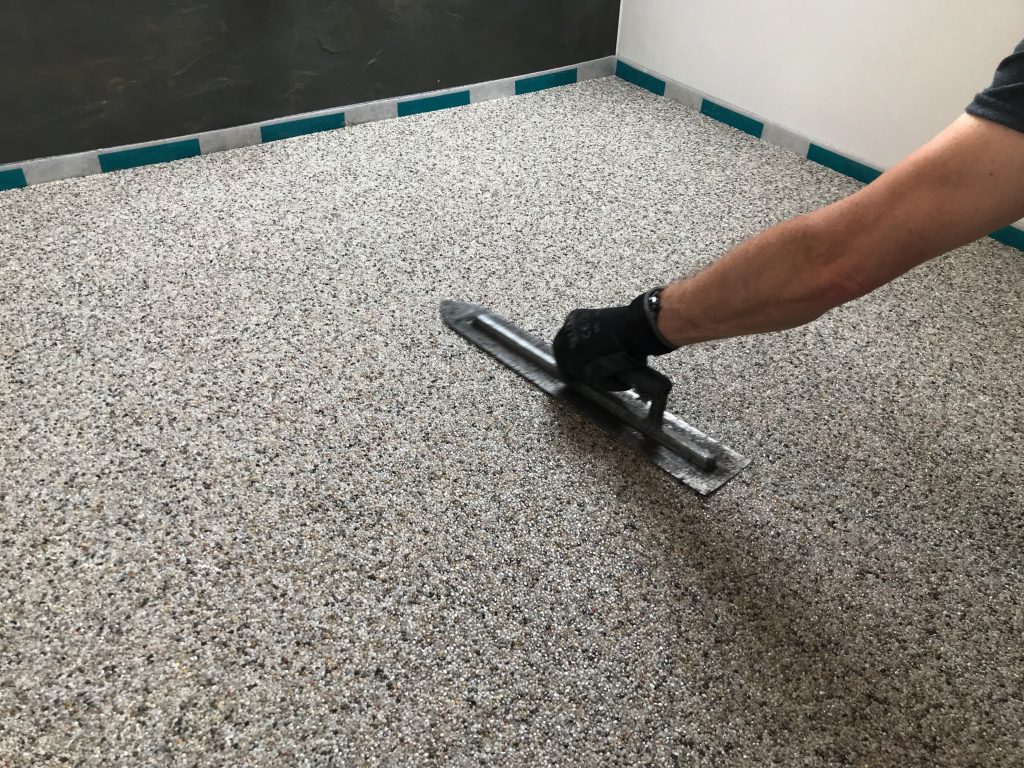
There are two types of underfloor heating The electric and the water-based underfloor heating system
Basically, a stone carpet pore seal performs an important task: it closes the pores that remain between the individual pebbles after a gravel floor has been laid. This turns the open gravel floor into a closed, watertight system. Consequently, gravel coatings with a Qubo® stone carpet pore seal are used wherever liquids are handled a lot, for example in bathrooms and kitchens. These liquids no longer penetrate the floor, but remain on the surface where they can be easily absorbed.
Die unterschiedlichen Systeme aus dem Portfolio der Marke Qubo® haben entsprechend ihrer jeweiligen Eigenschaften ganz unterschiedliche Einsatzgebiete, die in den folgenden Absätzen genauer erläutert werden.
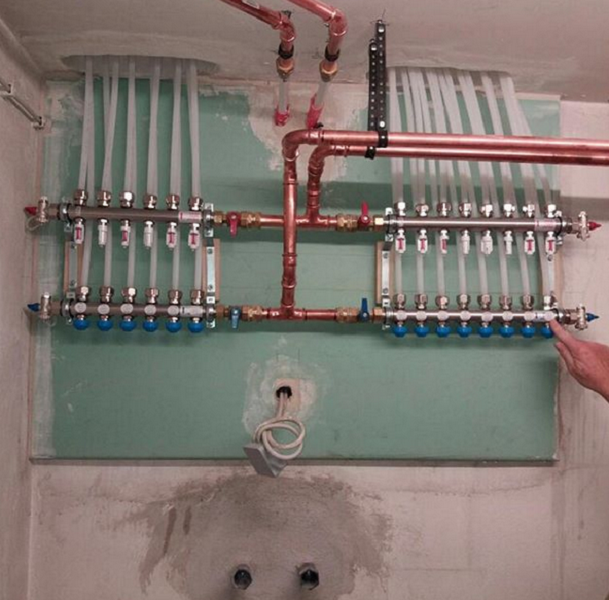
Electric
The electrical system is powered by electricity. It consists of heating cables or heating mats that are laid under the floor covering. Electric underfloor heating systems are easy to install and have a lower purchase price than water-based underfloor heating systems. However, they are also less efficient and can incur higher operating costs.
Water-based
The water-based system is powered by water. It consists of pipes that are laid under the floor covering. The water is heated by a heating system and pumped through the pipes. The energy source can be freely selected: Oil, gas, wood, pellets, or even electricity. Water-based underfloor heating is more efficient than electric underfloor heating and can lead to savings of up to 20% on heating costs. However, it is more expensive to purchase and requires professional installation.
Advantages and disadvantages of underfloor heating
Underfloor heating has many advantages. They distribute the heat evenly throughout the room. The heat rises from the bottom to the top, warming the entire room. This leads to a more pleasant room climate, as the air is not as dry as with conventional heating systems. Cold feet are also a thing of the past. In addition, underfloor heating is invisible and does not take up any space.
However, underfloor heating also has disadvantages. The system does not react as quickly as conventional heating systems and takes longer to bring the room up to the desired temperature. It is therefore particularly important to use a flooring system that counteracts this behavior. Many building owners opt for stone carpeting here. There are several good reasons for this.
These are the reasons why -
Stone carpet on underfloor heating
This effect can be further enhanced by milling the heating cables directly into the screed
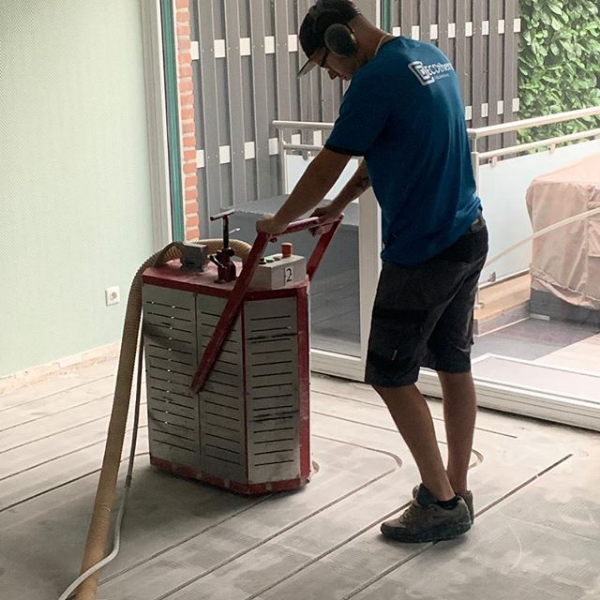
Thermal conductivity
The thermal conductivity of the floor covering is an important factor when selecting a floor covering for underfloor heating. Stone carpet has excellent thermal conductivity, which means that it transfers heat to the room quickly and efficiently. Compared to other floor coverings such as laminate or carpet, stone carpet is a much better choice for underfloor heating as it transfers heat better and faster.
The reason for this is the direct connection between the stone carpet and the substructure. While an air layer remains between the screed and the laminate, the gravel coating is applied directly to the heated screed. This allows the heat to be transferred to the room much better.
Heat distribution
Another advantage is the excellent heat distribution on the stone carpet itself. When laid over underfloor heating, the gravel layer heats up homogeneously throughout the room. This ensures a particularly pleasant walking sensation, as the running surface has the same temperature everywhere. With tiles, this effect can usually only be achieved if the heating loops are laid particularly close together, which increases the amount of material and work required and therefore also the costs for the heating system.
Aesthetics
In addition to the practical benefits, stone carpet also offers aesthetic advantages in combination with underfloor heating. Stone carpet is available in many different colours and textures and can therefore be perfectly adapted to individual wishes and needs. In addition, the seamless surface of stone carpet ensures a modern and attractive appearance. The fact that the heating pipes are underneath the stone carpet contributes to the uniform appearance.
conclusion
Overall, stone carpet is an excellent choice in combination with underfloor heating. Its high thermal conductivity, good heat storage and aesthetic benefits make it the ideal floor covering for a comfortable and efficient heating system. If you want to install underfloor heating, you should therefore definitely consider using stone carpet as a floor covering. In this way, you will also ensure that your property …
… for a strong appearance!
Non-binding cost estimate for your stone carpet
Link collection
First and foremost, the area of application determines the pricing. However, the costs depend on many different factors, including
- the type of binder required
-
from the primer
-
the choice of skirting boards, for example if these are also made of quartz gravel
-
from the labor costs of the professional installer
-
the size of the area to be laid
In outdoor areas, the costs are higher because the substrate is sealed and a special binder is used.
In most cases,
colorquartz
or
marble gravel
is used for the production of stone carpets. However, there are considerable differences in quality here, for example in the proportion of dust in the material or in the types of marble used.
Colored quartz is available in the following grain sizes:
-
1–2 mm
-
2–3 mm
- 3–4 mm
Marble gravel is available in the following grain sizes:
-
1–4 mm
-
4–8 mm
- 8–15 mm
Of course, the choice of gravel grain size has an effect on the laying thickness of the gravel floor.
The laying thickness of the floor depends on the gravel grain size and the area of application. Normal quartz gravel with a grain size of 2 – 3 mm can be laid indoors with a thickness of 6 mm.
An installation thickness of 8 mm is used outdoors and on stairs indoors due to the load.
Finally, 10 mm of material is applied to external stairs.
Vertical surfaces such as risers, skirting boards and walls are always laid in 6 mm.
The larger the grain size of the gravel, the higher the installation height of the floor covering. This means that more gravel and additional binder is required per m². The price increases accordingly.
The primer forms the bonding bridge between the building structure and the gravel floor. The material can be applied to almost any substrate, for example tiles, wood, stone, concrete and metal. Different substrates require different preparation steps.
On tiles and metal, for example, a primer is required to give the smooth surface stability during installation.
On porous stone and absorbent screed, the appropriate primer must be used to prevent the binder from being absorbed, which is intended to ensure that the pebbles remain in place.
To coat wooden planks with a gravel floor, the movement of the planks against each other must first be stopped. To do this, the installer first applies a mesh mat to the wooden floor. Once the filler has dried, the gravel floor is applied.
Especially in kitchens and
bathrooms
, a gravel floor should be fitted with a pore seal for reasons of hygiene. It prevents leaked, sticky liquids from penetrating the gravel structure. While liquids that have penetrated an open floor are difficult to remove, the pore seal enables
effortless cleaning
by wet mopping.
Dogs
, cats and co. feel much more comfortable on the textured surface than on smooth floor coverings such as tiles or laminate, as they do not slip on the gravel texture. However, it is advisable to cover the floor with a pore seal to ensure an easily wipeable surface.
terrace
is the durable alternative to other floor coverings. The system forms a non-slip floor that is 100% frost-proof and UV-resistant
-
High drainage capacity due to open-pored structure
-
Quick drying in sun and wind
-
Easy to clean and self-cleaning
-
100% frostsicher
-
UV-stabil
- Gentle, massage-like walking comfort when walking barefoot
The most important thing when laying gravel floors in outdoor areas is preparing the substrate. This ensures the durability of the finished floor.
On the one hand, this is because a primed subfloor provides significantly increased adhesion for the filled gravel. On the other hand, a sealing layer keeps rainwater away from the building structure, for example, which supports long-term durability.
Options for sealing building structures are
- Sealing using a resin seal with a sealing membrane
- Sealing using a flex sealing slurry
In order to drain rainwater effectively, the floor covering is laid with a gradient of at least 1.5%.
In outdoor areas, the stone carpet is always laid as an open system to ensure drainage capacity and thus the run-off of rainwater. This makes them 100% frost-proof and therefore ideal as
pool surrounds
and as a covering for balconies, terraces, entrance areas, outdoor steps and loggias.
We would like to point out that we do not recommend stone carpets in the direct shower area. The reasons for this can be found in the basic structure of the floor and the wet room. Just as the tile adhesive under a tile does not form a completely flat surface without air pockets, pores also remain underneath a sealed stone carpet.
If, after years, a silicone seam leaks and water from a fitting, for example, penetrates between the wall or floor covering and the seal of the building structure, the transparent pore seal reacts with the water and forms white stains. As these occur underneath the seal, they cannot be wiped away or removed by drying.
This is why insurance companies do not classify stone carpets as suitable for wet rooms and do not replace such coatings in the event of damage. We therefore recommend microcement coatings for showers. With these, there is no water-bearing layer between the floor covering and the substrate, so there is no risk of moisture penetration. Due to the many customization options for microcement, it can also be combined with stone carpeting. Just get in touch with us.
stairs
can be easily renovated both indoors and outdoors. Coating your old staircase with stone carpet gives you a new design without having to invest in a new staircase. Renovation is carried out without any chiselling or demolition work. Staircase renovation significantly reduces or even completely eliminates noise. Of course, stone carpeting is also ideal for new staircases and entrance areas.
A staircase coated with stone carpet already has a slip resistance class of R10 after installation.
The slip resistance class can be increased to R11 or R12 using special sealants.
Depending on the type of staircase, renovations are possible within 3-5 days.
Please contact us to discuss the details
.
All our gravel floors use natural stones as the base material. This is why many people also refer to stone carpeting as
natural stone carpeting
.
The gravel is available natural and colored.
A professionally laid floor can practically only be destroyed by chemical stress or under the influence of enormous mechanical forces. It can therefore be assumed that a well-maintained floor will last for several decades.
A separating layer can be worked into the floor coating during installation. This additional step during installation makes it very easy and effortless to remove the gravel flooring.
Mica additives and various gemstones can be added, but this represents a further cost factor.
FAQ
Details and facts, key figures and explanations – here you will find answers to frequently asked questions about our Qubo® coating systems. If any details remain unclear, simply contact us at . We will be happy to advise you personally and promptly.

